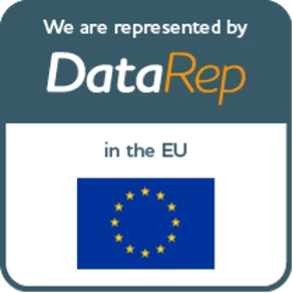How do the consumers that you’re looking to target with your marketing make decisions when it comes to buying?
This is a key piece of insight for any brand and the foundation of successful interaction with those who could become your customers.
However, it’s not always a straightforward question to answer. While there are plenty of theories about the way that we decide what to buy and the thinking processes that are involved, the popularity of digital purchasing, and the alternative context this has created, requires a perspective shift.
The science bit

For perhaps half a century, the market research sector focused on conscious, rational thought as the method most people use make decisions.
However, as the science has developed, we now know that it’s actually the opposite – the majority of decision-making is subconscious. For any human making a choice, whether that’s which product to pick up off the shelf or which mobile phone plan to buy, one of two thought processes is activated – System 1 (Fast Thinking) and System 2 (Slow Thinking).
- System 1 = intuitive, subconscious impressions, associations and impulses
- System 2 = logical, conscious, methodical, used to evaluate complex matters
System 2 thinking is often more likely to be correct but, according to neuroscience research, it’s System 1 that accounts for up to 95% of our daily, cognitive activity. Including the decisions we make about what to buy.
Does your brand resonate at System 1?
This is the first key question when it comes to understanding consumer purchase decision-making. It’s tapping into this consumer thought process that can make your brand an intuitive choice and trigger unconscious recall of your products and reputation.
The purchase of lower value products is more likely to engage System 1 thinking – dealing with a higher value, more complex item is often when the human brain will call on the more methodical and in-depth analysis of System 2.
However, there are exceptions – Apple, for example, has been incredibly successful in creating emotional brand resonance with high value products.
Brandspeak uses 3 key measures to determine System 1 resonance:
- Spontaneous awareness: we measure unprompted brand awareness versus competitors – and the speed with which the brand in question is brought to mind
- Emotions aroused: we measure the brand and its competitors against a basket of different, positive, neutral and negative emotions, to determine the strength and differentiation of its emotional profile
- Visual recognition and association: we assess the extent to which the brand can be recognised in various physical guises including the logo, the strap, the packaging and advertising – as well as the thoughts and associations corresponding to each one.
The online shift
The use of System 1 and System 2 thinking gets thrown somewhat off centre when it comes to the purchasing decisions that are involved in online buying.
Rather than standing in a store faced with two products to choose from, consumers are in front of a screen, under no pressure and with a wealth of different resources that could affect how choices are made.
A prime example of this is the way influencer marketing can sway the decision-making process. 54% of social browsers use social media to research products, and influencers have a big role to play in the choices that people make.
We respond to influencers with our emotions and with feelings such as aspiration, envy, desire or approval and these can be incredibly powerful when it comes to making buying choices.
However, we may also integrate them into the more logical, evaluative way we make decisions. This is a state of affairs that we are increasingly settling into as the norm – 49% of consumers now say that they depend on influencer recommendations on social media to inform their purchasing decision.

Adapting the model of decision-making
If you’re looking at the way people make buying decisions online then the model of decision-making needs to be adapted to take into account the effect that influencers can have.
Another important factor to bear in mind is the impact of Word of Mouth on online buying, including when this takes the form of reviews. 88% of consumers say they trust reviews as much as personal recommendations.
One study found that the presence of review stars in product search results can increase click-through-rates by up to 35%.
There are also other ‘influences to integrate into any assessment of the consumer purchasing process online including:
- Trust in brand online presence – consumers don’t deal directly with staff or products so trust must be established and high
- Cybersecurity – 61% of consumers say they are more worried about cybersecurity today than they were five years ago
- The necessity of a well-designed website – preferably one that enables consumers to reduce their decision-making efforts by providing vast selection, information screening, reliability, and product comparison
Consumers and decision-making – rising to the challenge, online and off
- Omni channel marketing is very relevant, especially to online purchasing. Consumers gather information from a range of sources before making a buying choice, including a company website and friends and family.
Action: Differentiate your marketing across as many channels as you can afford to do well – although many brands understand omnichannel marketing is important, few currently do it so it’s a simple way to create a competitive edge. - It’s not always useful to ask your audience why they made a purchase. Whether online or off, the influence of System 1 thinking may mean that actually they don’t know.
Action: tailor your marketing strategy to appeal to System 1 decision-making and focus on emotional resonance. - Simplicity enables decision-making in any environment. The easier something is to understand, the more appeal it has. For example, consumers buying internet + TV or mobile phone plans are much less likely to invest time in comparing monthly download limits or text volumes and much more likely just to opt for unlimited plans because it’s simpler to understand.
Action: simplify marketing from top to tail, including website text, product descriptions and marketing messaging. - Previous positive experiences influence future buying choices. It’s not rocket science – if a diner enjoyed a dessert they are more likely to order it again. If a customer has previously bought online from a brand and had a positive experience the chances are they will want to repeat it.
Action: invest in experience, from customer service to website navigation if you want to influence future buying choices, online and off.
Insight into the way that the consumers you’re targeting make purchases can be essential if you want to see genuine ROI from marketing and improvement in revenues and growth. It may be necessary to take into account both System 1 and System 2 thinking as well as the additional considerations that the online environment entails.
Brandspeak specialises in understanding how and why consumers make the purchase decisions they do – and how to influence those decisions.
For more information contact Brandspeak on +44 (0)203 858 0052 or at enquiries@brandspeak.co.uk
Additional resources used:














